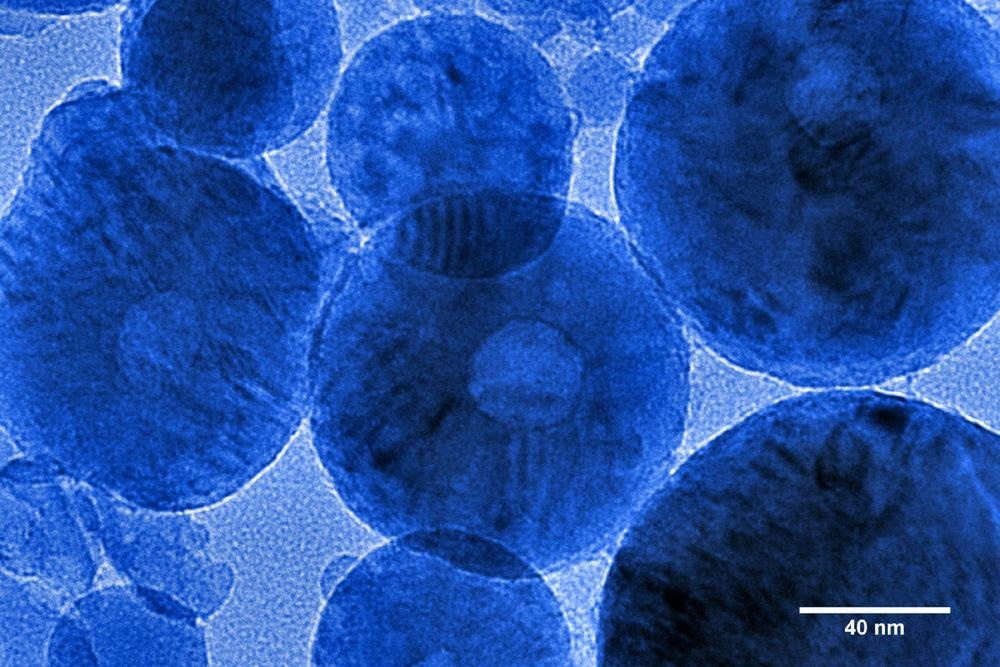
Image Credit: Georgy Shafeev/Shutterstock.com
Determining the size of nanoparticles is one of the most important factors in the field of nanotechnology. It defines the unique characteristics of the nanomaterials that are being created for multiple new and valuable applications.
Measuring the size of nanoparticles has been found to be vital to furthering our knowledge of air pollution. Recent studies have revealed that the size of nanoparticles impacts how they move around our bodies, and, ultimately, how exposure to nanoparticles impacts our health.
Here we discuss the current measurement techniques being used to determine the size of nanoparticles along with the relevance of these methodologies in the development of nanomaterials and understanding their impact on air pollution and consequently, human health.
How to Measure Nanoparticle Size
Nanoparticles are nanomaterials with a size range within the nanometer (nm), such as 100 nm. A number of different measurement techniques have already been developed and adapted to determine the size of nanoparticles.
Some of these techniques involve measuring the physical size of the nanoparticle, and others involve measuring the hydrodynamic size of the nanoparticle. For instance, they measure the layer of water that attaches itself to the nanoparticles as it moves through a nanoparticle suspension solution. Therefore, the calculated nanoparticle size is dependent on the type of interface being investigated.
Additionally, the nanoparticle’s shape also influences the size analysis method. Some measurement techniques assume an average spherical shape of the nanoparticle, and will, therefore, give measurements of size in the form of a diameter despite not all nanoparticles being spherical.
There are roughly six methods of measuring the size of nanoparticles that are widely adopted in labs across the world. These methods are dynamic light scattering, disc centrifugation, nanoparticle tracking analysis, tunable resistive pulse sensing, atomic force microscopy, and electron microscopy.
While other methods have also been adapted to measuring the size of nanoparticles, the above six are considered to be the most common and can be used across scientific fields.
Why Should the Size of Nanoparticles be Measured?
Nanoscience is a growing discipline that has already achieved huge advancements in the field of nanotechnology in just a couple of decades. Multiple applications of nanotechnology have emerged across a diverse range of industries, which have often been revolutionary and helped to drastically enhance or advance the field.
Green energy, electronics, medical and pharmaceutical, coatings and paints, and transportation are just a few areas that have been radically changed by nanoscience and by adopting the use of nanoparticles.
The size of nanoparticles is vital to their characteristics and, therefore, their function. Determining the size of nanoparticles is essential to understanding the characteristics associated with different particle sizes, how they interact with other compounds, and how they can be leveraged in different applications. Without being able to measure nanoparticles, nanotechnology applications in the above-mentioned fields would not have been achieved.
For example, the energy industry has used nanoparticles in various ways to improve the efficiency of green energy options. Gold nanoparticles are being used to enhance the energy-capturing power of solar panels, nanofluids are being optimized to improve the heat-retaining properties of geothermal extraction fluids, and nanoparticles are also being used to enhance the amount of energy generated by wind power. In all these scenarios, the size of nanoparticles used is vital to their function.
Nanoparticles are also being used to give construction materials new and enhanced properties, such as coatings with anti-graffiti properties, anti-reflection abilities, and self-cleaning capabilities. These coatings can also be super-hydrophilic, hydrophobic nanocoatings and offer UV protection.
Other examples include the use of nanoparticles to improve medical imaging and develop new therapeutic methods, as well as to clean up environmental contaminants. In all almost all examples of the use of nanoparticles, the size of nanoparticles is essential to their function. Because of this, appropriate measurement techniques and regulatory processes to keep nanoparticle size consistent is vital to their success.
Nanoparticle Size and Air Pollution
Air pollution is a major threat to human health worldwide. Recent research has revealed that the size of nanoparticles impacts how they affect the human body. Discovering more about the nature of nanoparticle pollution and how it influences human health is vital to protecting both humans and the environment from the negative impact of air pollution.
Methods that measure the size of nanoparticles are fundamental to this research as it allows scientists to gain an understanding of the size of nanoparticles in the environment as well as how they move around the body and enter the organs.
The Future of Nanoparticle Size Measurement
Regardless of which industry nanotechnology is being used in, measuring the size of nanoparticles is essential to understanding the characteristics and potential uses of different nanoparticles (in comparison to their uses as bulk materials) and developing the use of nanoparticles in various game-changing applications.
Future development of methods capable of reliably and accurately measuring the size of nanoparticles will go hand-in-hand with the establishment of further applications of nanoparticles.
References and Further Reading
Bundschuh, M., Filser, J., Lüderwald, S., McKee, M., Metreveli, G., Schaumann, G., Schulz, R. and Wagner, S., 2018. Nanoparticles in the environment: where do we come from, where do we go to?. Environmental Sciences Europe, 30(1). https://www.ncbi.nlm.nih.gov/pmc/articles/PMC5803285/
Caputo, F., Clogston, J., Calzolai, L., Rösslein, M. and Prina-Mello, A., 2019. Measuring particle size distribution of nanoparticle enabled medicinal products, the joint view of EUNCL and NCI-NCL. A step by step approach combining orthogonal measurements with increasing complexity. Journal of Controlled Release, 299, pp.31-43. https://www.sciencedirect.com/science/article/pii/S0168365919301130
Nanoparticle Technology Handbook, 2018. Basic Properties and Measuring Methods of Nanoparticles. pp.3-47. https://www.sciencedirect.com/science/article/pii/B9780444641106000019
Disclaimer: The views expressed here are those of the author expressed in their private capacity and do not necessarily represent the views of AZoM.com Limited T/A AZoNetwork the owner and operator of this website. This disclaimer forms part of the Terms and conditions of use of this website.